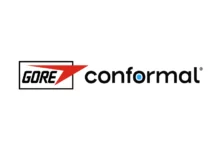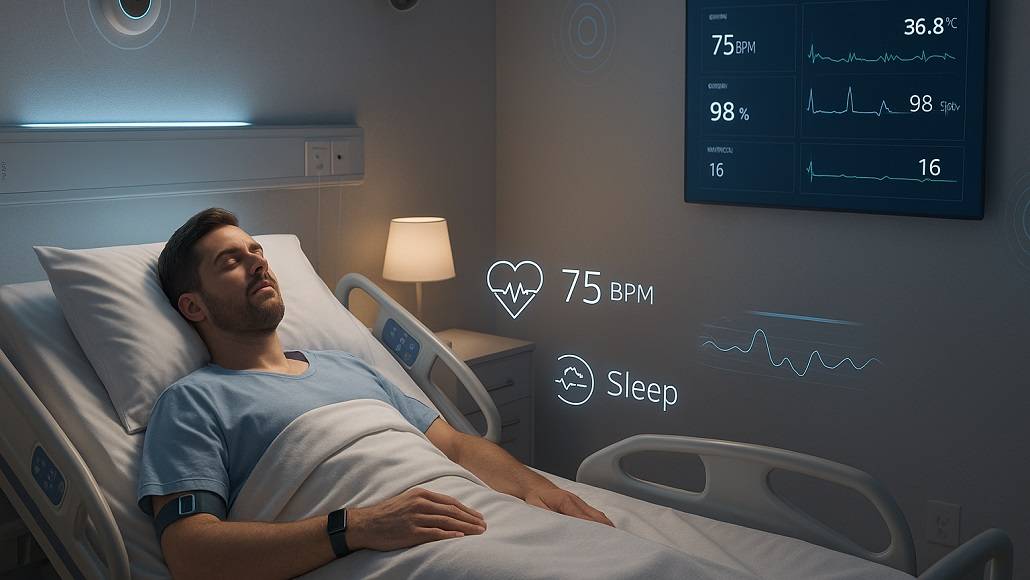It is well to be noted that zero-click care is rapidly shifting from being a future concept to an imminent benchmark. This kind of model of Care leverages the power of ambient sensors along with wearable devices and also room-based IoT infrastructure in order to transform hospital environment into intelligent and responsive spectrums, which engage patients without having any kind of active input.
By way of automating everything right from real-time vitals tracking to behavior-driven clinical nudges, zero-click care helps providers to go ahead and connect with patients in a very seamless way. The result is a reimagined patient experience, which is more comfortable, far more efficient, and, of course, more responsive. As hospitals go on to face a very mounting pressure in order to enhance their outcomes, optimize the workflow, and even elevate the satisfaction in patients, this kind of new paradigm of passive engagement will be the key whenit comes to unlocking the sustainable digital transformation.
Reimagining engagement in an age that is all about invisible technology
Historically, patient engagement is quite synonymous with active participation – logging into the portals, responding to the reminders, and even completing the questionnaires. However, as care delivery goes on to become more connected as well as customized, hospitals are looking out for a more frictionless model. Zero-click care – passive patient engagement by way of ambient sensing as well as IoT in hospitals—eradicates the requirement for patients to go ahead and initiate interactions completely. Rather, environmental sensors and biometric wearables, along with intelligence systems, gather, evaluate, and even respond to the patient data, and that too in real time.
It is well to be noted that in this emerging spectrum, the very walls of the hospital room have become instruments of care. Pressure sensors, which are embedded in the bed, track restlessness or even detect fall risks. Thermal imaging as well as motion sensors evaluate movement patterns, the quality of sleep, and even possible distress. Wearable trackers of heart rate variability, temperature, and oxygen saturation consistently feed the data to the clinicians without disrupting the rest of the patient.
As per a TechTarget article concerning health IT’s influence when it comes to outcomes, patient engagement strategies that utilize ambient monitoring, digital nudges, and also remote patient data happen to play a very critical role when it comes to enhancing not just the care delivery but also the overall experience of healthcare. This supports the foundation argument in terms of zero-click care—that when engagement becomes more ambient as well as automated, it elevates the responsiveness without causing any kind of overburdening to the patient or even the providers.
The passive engagement infrastructure
The backbone of zero-click care – passive patient engagement by way of ambient sensing and also IoT in hospitals—happens to be a sophisticated network of interoperable devices as well as systems. Hospitals happen to be investing in smart patient rooms, which are equipped with IOT-enabled lighting, temperature control, and even voice-responsive systems. These kinds of smart environments attached to a patient’s behavior and conditions go on to create a therapeutic experience, which is customized down to the ambiance of the room. The fusion of ambient sensing along with the Internet of Things (IoT) infrastructure enables hospitals to not just collect the biometric as well as behavioral data, but it also helps to contextualize it. For example, if a sensor happens to detect unusual nighttime movement, it can as well trigger a silent alarm. To the nurse station, or if a wearable happens to flag abnormal vitals, it can go ahead and prompt a preemptive clinical intervention.
Interestingly, the true power of AI in enabling zero-click care happens to lie in its capacity to transform raw data into contextual, real-time intelligence. By way of consistently evaluating patterns in vital signs, lab results, and even non-traditional metrics such as mobility or sleep data from wearable devices, AI models can go ahead and detect deviations, which might escape human observations. For example, a gradual decline in the respiratory rate variability, which is a subtle but critical marker, could as well signal early sepsis risk long before it actually occurs. These systems don’t just flag the anomalies; they happen to prioritize as well as contextualize alerts by weighing factors such as the patient history, comorbidities, and even protocols in treatment. This makes sure that care teams get hyper-relevant, decision-ready insights, like automated suggestions, in terms of fluid resuscitation or antibiotic adjustment by reducing the cognitive load while at the same time speeding up the life-saving interventions.
It is worth noting that what actually makes this model transformative is its non-invasive nature. Unlike traditional health technology, which requires interaction such as going ahead and pressing a button, wearing a monitor, or even logging symptoms, ambient sensors function quietly in the background. This is especially valuable for populations that are vulnerable, like elderly patients or those with cognitive impairment or even individuals in postoperative recovery. Engagement happens to become continuous as well as effortless, thereby decreasing the risk of the symptoms or even delayed alerts.
AI, data integration along with smart alerts
A crucial enabler of zero-click care happens to be the integration of artificial intelligence as well as predictive analytics into the hospital IT ecosystem. By way of evaluating trends within sensor-derived data, AI engines can go ahead and identify very subtle deterioration within the conditions in the patient before they actually escalate into certain clinical emergencies. These kinds of insights then go ahead and trigger smart nudges, which are actionable alerts that are sent to care teams at exactly the right moment.
Apparently, these nudges may as well take the form of real-time care suggestions, early warnings in terms of potential complications, or even non-clinical cues, like encouraging movement, hydration, or even rest. Because they happen to be derived from the passive data collection, they do not go on and depend on the ability of the patient or the willingness to report the symptoms. In effect, hospitals can go ahead and engage patients as well as manage care in a proactive way, without waiting for alarms to sound or even for the patient to speak up.
This article from TechTarget reinforces the point by way of underscoring the role of AI-driven patient engagements when it comes to elevating care responsiveness along with satisfaction. The usage of predictive algorithms when it comes to conjunction with patient monitoring systems not only improves the speed and quality of critical decision-making, but it also reinforces the trust of the patient by demonstrating attentiveness and alertness even at a time when there is no explicit communication that occurs.
Elevating the patient experience without any kind of interaction fatigue
One of the hidden challenges when it comes to digital health tools happens to be what some experts refer to as engagement fatigue. When the patients are asked to consistently input data, respond to messages, or even navigate certain portals, it can lead to cognitive overload, especially in high-stress environments, such as hospitals. Zero-click care resolves this issue by way of removing the burden of interaction altogether.
In this scenario, patients no longer need to remember to press call buttons, wear any sort of cumbersome devices, or even participate in routine check-ins. Rather, technology anticipates their requirements. For example, if a patient is lying in bed for too long, a passive sensor might as well prompt the staff to assist with mobilization, thereby preventing any pressure ulcers. If sensors go on to detect unusual restlessness, clinicians might intervene in order to manage pain or even anxiety. Significantly, this kind of engagement model does not replace the human interaction. However, it enhances it. By way of handling routine data collection along with initial triaging, it frees up the clinical staff to focus on more empathetic and high-touch care. This results in an environment in which patients feel seen as well as supported without getting overwhelmed by the consistent digital prompts.
Operational efficiency along with clinical advantages
Advantage of zero-click care: passive patient engagement through ambient sensing in IoT and hospitals goes beyond the patient experience. Hospitals also stand to get all the advantages quite significantly from operational gains as well as clinical efficiency. With consistent data streams feeding into centralized dashboards, clinicians happen to gain a holistic view of patient status throughout the entire floor or facility. This happens to enhance prioritization, decrease response times, and also support better allocation in terms of staff as well as resources.
It is well to be noted that automated data capture also reduces documentation errors and, at the same time, decreases the administrative workload. Nurses, along with clinicians, happen to spend less time logging the vitals or observations and more time when it comes to direct patient care.
Besides this, the data generated by way of a passive system also supports population-level insights, which can also inform quality improvement initiatives along with infection control as well as post-discharge planning.
These efficiencies happen to translate directly into enhanced outcomes. Early detection of sepsis, proactive pain management, and fall prevention are just a few instances of how ambient IoT systems can actually materially influence clinical trajectory. As zero-click engagement matures, it promises to become the cornerstone of highly dependable hospital operations.
Security, ethics, as well as the human element
It is said that with great automation happens to come great responsibility. One of the most critical considerations in rolling out ambient IOT systems happens to be making sure that patient privacy, data security, and ethical usage of passive monitoring are protected. Patients must be informed of what kind of data is getting collected, how it is being used, and who happens to have the access to it. Transparency, along with consent, is especially very important when dealing with sensors, which capture behavior, biometric data, and location continuously. Hospitals must also execute robust cybersecurity measures, anonymization protocols, and even compliance frameworks in order to make sure that passive data does not become a kind of liability.
Ethically, it is very important to balance automation along with compassion. Zero-click care must never reduce patients to certain data points – it should rather amplify human-centered care and not replace it. The best executions of passive engagement are those that make use of technology in order to support dignity, empathy, and even autonomy.
Let us look into the future
Although there are some components of zero-click care that are already being trialed or even adopted across advanced facilities, its full potential is still getting unleashed. In the near future, one might see hospitals with intelligent ambient systems that alter care plans dynamically based upon the behavior, sentiment analysis, and even environmental context. Rooms may as well communicate with clinicians in an autonomous way. Discharges may be optimized on the basis of sensor-verified mobility data, and infrastructure may as well become as responsive as the staff who actually walk in its halls.
Zero-click care – passive patient engagement by way of ambient sensing as well as IoT in hospitals—goes on to represent the next frontier of intelligent healthcare. It actually happens to be the future where engagement is not just an added task, but it is an embedded experience. It is that kind of healthcare that listens, watches, and even responds without needing permission or even prompting.
The power of being passive
In an age where customization is prized as well as friction is the enemy of efficiency, zero-click care – passive patient engagement by way of ambient sensing and IoT in hospitals—goes on to offer a powerful new vision for healthcare. By eradicating barriers between patients as well as their care teams, this model happens to deliver on the core promise of digital transformation – to make healthcare more responsive, more effective, and more humane.
It is well to be noted that hospitals that actually invest in ambient intelligence along with passive engagement are not just rolling out new technology but rewriting the rules of care delivery. By way of doing so, they are making patient engagement not only easier but also smarter, more intuitive, and deeply ingrained within the healing rhythms.


















